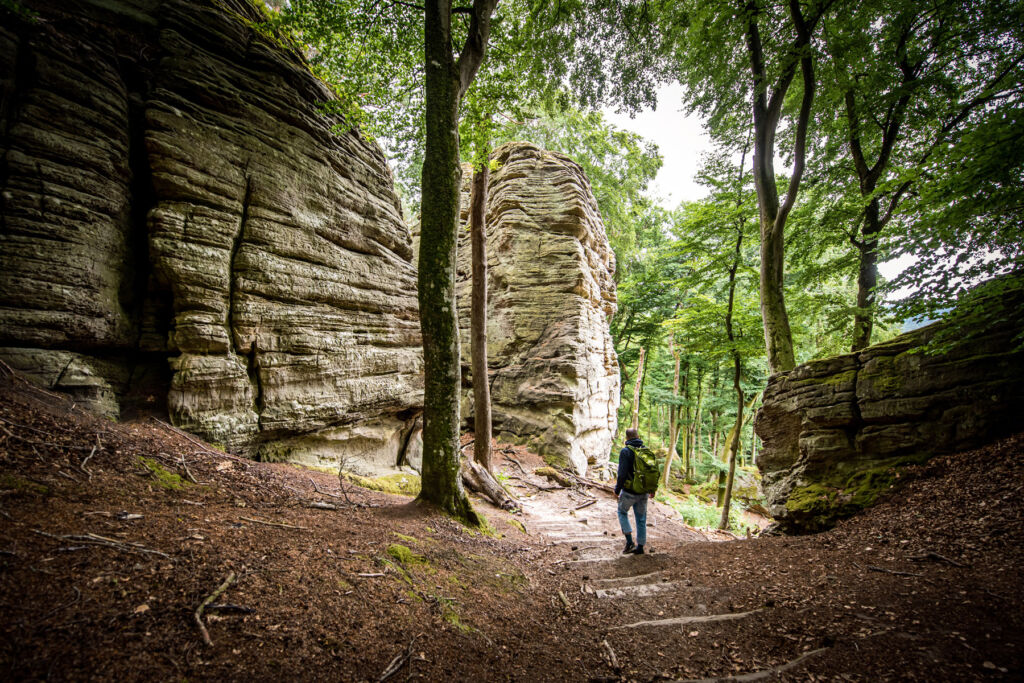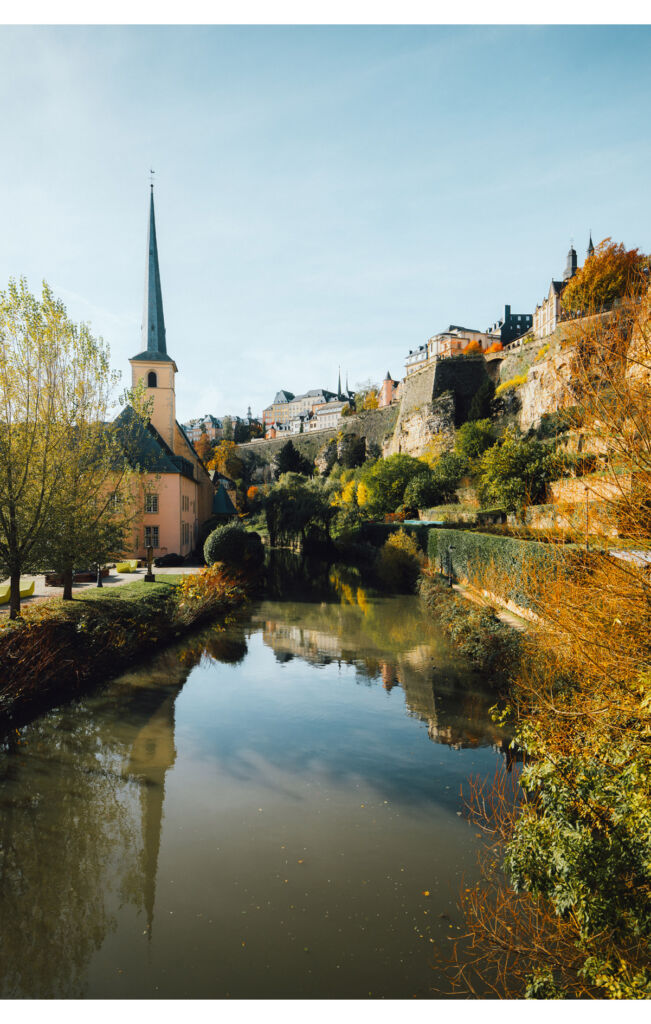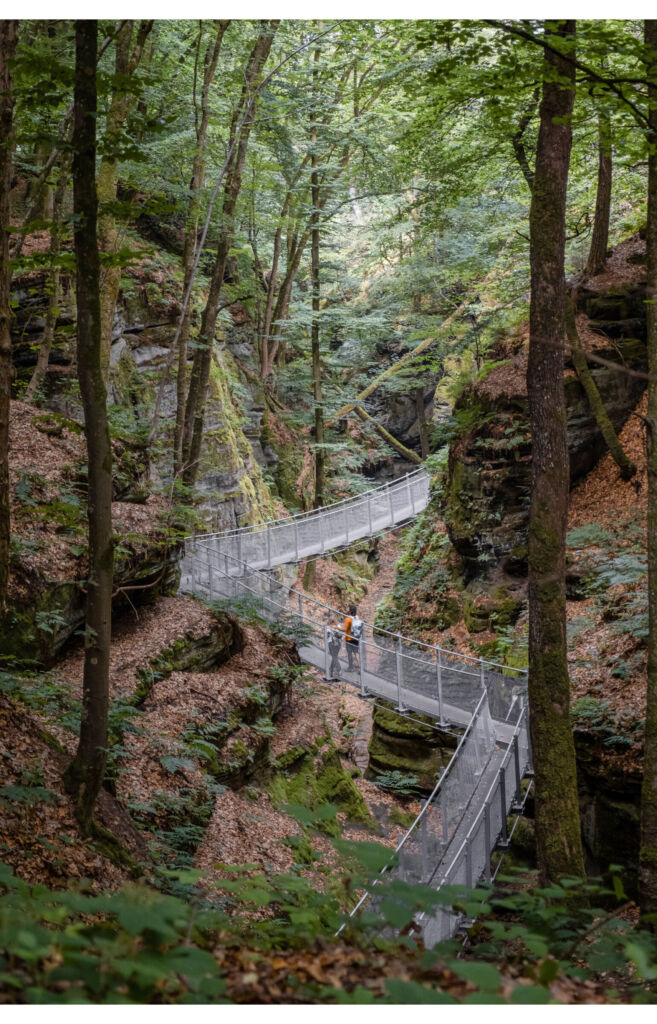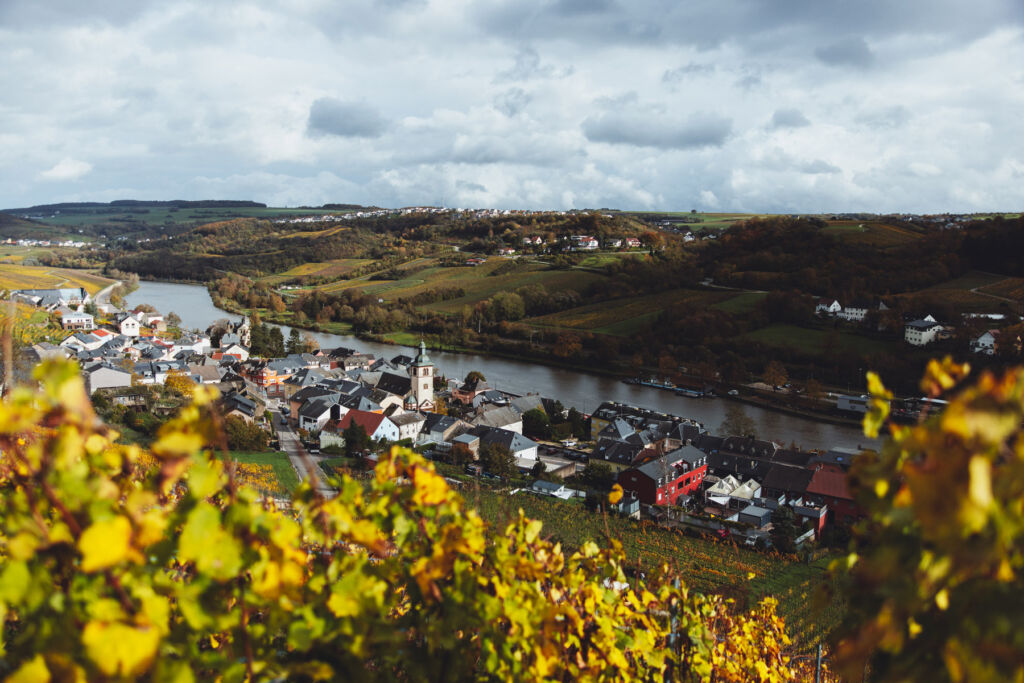
With spring blooming and National Walking Month approaching, there’s no better time to plan a hiking holiday. When it comes to walking and hiking, one country that might not automatically spring to mind is Luxembourg. In this guide, we’ll look at some of its superb routes, which will bring joy to walkers of all levels and show that this country punches well above its hiking weight.
Luxembourg, yet to be discovered by many travellers, offers the ideal location for hiking enthusiasts, thanks to its picturesque city and surrounding regions filled with diverse landscapes, lush forests and idyllic backdrops. Situated in the heart of Europe, this country is blessed with an extensive network of trails that cater to all levels of hikers, including those with accessibility needs.
With spring temperatures between 10° to 20° in Luxembourg, travellers can enjoy the hikes in a mild climate while avoiding crowds that might form on the trails during the peak summer season. From gentle strolls along the Moselle River to challenging climbs in the Mullerthal region, here are the best hiking trails to try in Luxembourg City and its surrounding regions encompassing it.

Luxembourg City
Within the city walls, travellers can discover one of the greenest capitals in Europe by leisurely strolling through its many gardens and parks, such as the convent grounds of the Pfaffenthal hospice, the Municipal Park or the verdant gardens near the Abbey Neimënster.
For history lovers, Luxembourg City offers the Wenzel Circular Walk, guiding visitors through the capital’s millennial history. This walk brings hikers to the oldest quarters of Luxembourg City, including the Bock promontory (the city’s cradle), the 18th-century castle bridge, and the Corniche, also known as “the most beautiful balcony of Europe.”
Moselle, Luxembourg’s wine region:
The Moselle Valley, known for its hilly landscape and verdant vineyards, offers a range of premium trails. Located in the East of the country, the hiking trail in Remich is an easy route through the narrow streets of the quaint town, Jeannot Belling Park, and the esplanade. It houses plenty of places to sit and enjoy calming views over the Moselle River. The wide, flat paths make this circular walk inviting and suitable for all family members.
A hike like no other, the trail over the Stromberg is one travellers should not miss. This path allows hikers to discover a ‘borderless Europe’, experiencing three countries in just three hours. Enjoy breathtaking vistas of the Moselle valley, trekking from Luxembourg over the Stromberg to France and its vineyards while looking out on the German landscapes just across the river.
With its starting point at the European Museum in Schengen, it’s worth making time to visit ahead of the walk and learn more about the Schengen Area, which allows travellers to move around Europe visa-free.
Guttland, “the garden of the city”
The Guttland, located in the Centre and West of the country, is home to the hiking trail Bissen, which invites the whole family to discover the idyllic nature and dense forest of the area. Entering the Bonnert forest, the relaxing stroll takes travellers along a stream on a stabilised path, with plenty of benches along the way to take a break.
Discover historical remains, fascinating rock formations and enchanting forests on the varied “Fox Trail”. This hike includes stunning spots, such as the hidden “Huel Kimmerchen” (Hollow Chamber), a rock formation with a small chamber inside of it, or the vista of the Alzette valley. But the real highlight of this trek is undoubtedly the Roman temple complex. This 1st century was once comprised of 50 rooms and is one of the largest Roman villas ever discovered in the country.
You can find many exciting trails all around the Guttland Trails network. The Guttland Trails offer a carefully selected range of hiking experiences that lead adventurers through the idyllic nature of the region.

Two of the circular hiking trails have been certified with the “Leading Quality Trails – Best of Europe, Day Walk”, the Guttland Trail Siwe Brécke-Wee in Reimberg and the Guttland Trail Fuussepad in Steinsel.
The Mullerthal region, “Luxembourg’s Little Switzerland”:
The Mullerthal Region, also known as Luxembourg’s Little Switzerland, provides hiking enthusiasts with hidden waterfalls, limestone formations, and rich forests. Thanks to its rare geological formations, the natural landscape has been named a UNESCO Global Geopark and a UNESCO World Heritage site.
The best way for hikers to discover the fascinating region is on the 112-kilometre Mullerthal Trail. Distinguished as a “Leading Quality Trail – Best of Europe”, this path winds by varied landscapes, from impressive boulders to green fields and high treetops, and takes travellers up surprisingly challenging hills. There are several camping spots dotted along the trail, too, making it the ideal destination for a hiking adventure.
Éislek, the North of Luxembourg:
In the north of the Grand Duchy, visitors can discover the Luxembourgish Ardennes (the whole Ardennes region spanning France and Belgium). The region is a real paradise for hikers; it features two nature reserves and the country’s largest lake.
For experienced hikers, the Escapardenne Lee Trail is the trek to complete while in the area. It covers 52km (32 miles) through the Sûre valley and brings hikers to 32 panoramic viewpoints, quaint villages, and the Upper Sûre Lake.
For visitors who want to cover longer distances, the Escapardenne Lee Trail can be combined with the Escapardenne Éislek Trail, totalling 159km (99 miles). This trail was also awarded a ‘Leading Quality Trails—Best of Europe’ title and runs from central Luxembourg all the way to the Belgian Ardennes.
A stunning selection of trails in this area can be found on the Éislek Pied. In total, the region has 18 paths, which have all been designed according to the strict criteria of the European Ramblers’ Association. These are breathtaking as they take hikers through the region’s most beautiful landscapes. Along the way, hikers can explore the Éislek’s fauna, flora, and numerous historical sites.
Minett, “The Land of the Red Rocks”:
The Land of the Red Rocks lies in the south of the country and owes its name to the bright red colour of the ore found in the area. The glowing red stone is also behind the success of the iron and steel industry in Luxembourg during the industrial era. In 2020, UNESCO recognised the Minett region as a biosphere reserve. The man-made and rewilded landscapes are extraordinary, making discovering them a magical experience.
For those seeking exploration of the mining district, The Minett Trail offers a 90 km (56 miles) long hike, which takes adventurers through picturesque villages, bigger towns and eight nature reserves.
Along the route, hikers will also be able to spot former open pit mines filled with cliffy rocks and the famous red ore. It will also lead past the “Monument National des Mineurs”, commemorating the miners who died, and the National Mining Museum, providing historical insights into the region for any history lovers.
For those wanting to spend the night along the path, the Minett trail contains some remarkable hiking lodges called ‘The Kabaisescher’, where you can top up the energy levels and recover by sleeping in a train wagon, a former school or even a small fairy-tale tower.
For more information on places to see and things to do in Luxembourg, visit www.visitluxembourg.com.
 Wormeldange, Luxembourg for Tourism. Photograph ©Evolumina/LFT.
Wormeldange, Luxembourg for Tourism. Photograph ©Evolumina/LFT.![]()




You must be logged in to post a comment.